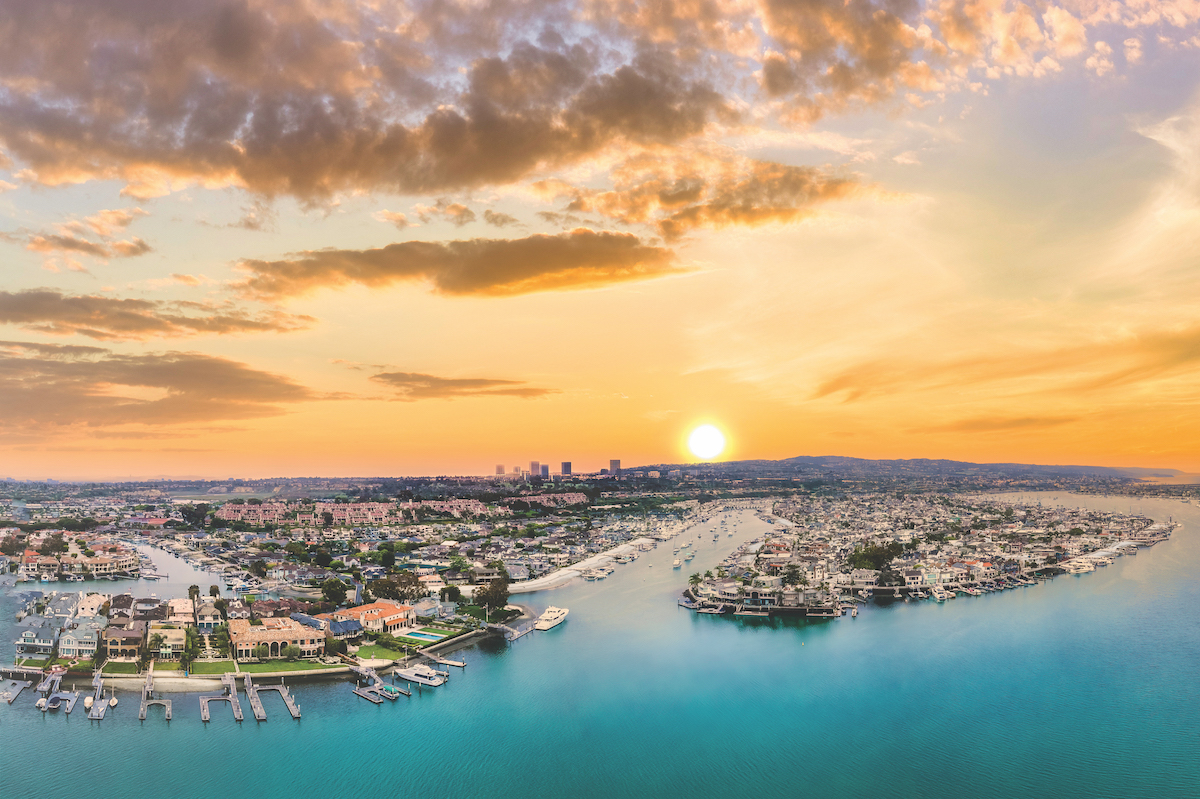
Residents and visitors enjoy the charm and history of Balboa Island’s laid-back community.
By Tanya A. Yacina
Established more than a century ago by developers with big visions, Balboa Island has evolved from humble beginnings as an underwater sand bar into a vivacious neighborhood and tourist destination. The small, densely populated island community boasts perfect weather, unique shops and restaurants and myriad outdoor activities for all ages. Not to mention, it’s a great place to live—residents have access to all the amenities the quaint island has to offer while being a quick drive to even more on the mainland.
The harborside neighborhood, ringed by a paved concrete boardwalk, is accessible from the mainland via bridge and from the peninsula via the well-known Balboa Island Ferry; there are also several docks for those arriving by boat. A Park Avenue bridge connects the main island to Little Balboa Island, just east across the Grand Canal.
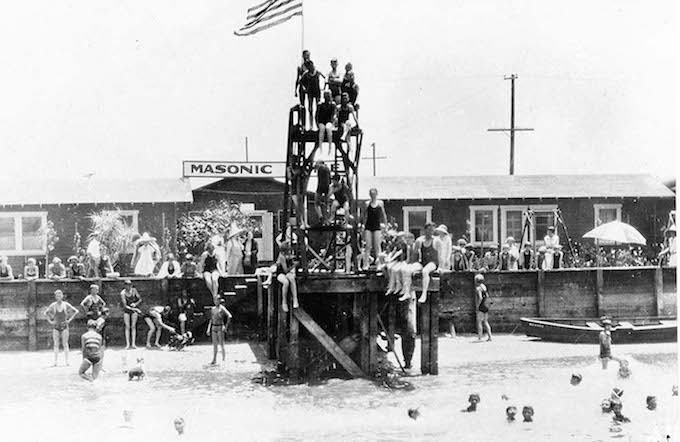
“It’s the only community in our area where you can walk the entire perimeter and admire the beautiful gardens, houses [and] boats. The demographics are a mixed bag of singles and couples,” says Shirley Pepys, the Balboa Island Museum board chairman. “There is a very strong sense of community. Marine Avenue is a small town main street offering a variety of restaurants and shops.”
Historic Beginnings
Balboa Island was once little more than a mudflat formed in intertidal areas where sediment was deposited by the Santa Ana River. James McFadden, who had bought the Newport Landing wharf in 1875, followed up in the 1890s by purchasing half of the peninsula and the marshlands, including what would eventually become Balboa Island. Later, in 1902, he sold all of his Newport-area property to William S. Collins.
“Collins was an idea man—he famously said he could ‘make money out of sand,’ and dredged the mud flats … into what would eventually become Balboa Island,” says Celeste Dennerline, chairman of visitor experience at Balboa Island Museum. “The main problem that he encountered was that he was trying to sell the lots as we were going into World War I and cars had just come out, which were about the same cost as the lots he was trying to sell.”
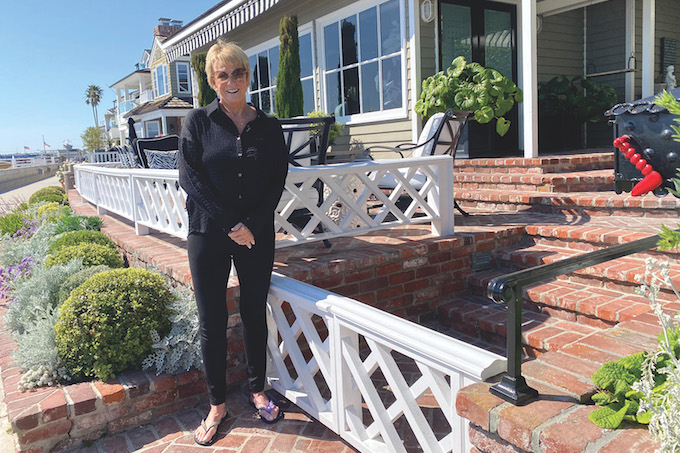
Collins subdivided and offered lots for sale for between $300 and $600, but not enough were sold to pay for improvements such as sewers, water, power and paved streets. When Collins went bankrupt, many of the lots reverted ownership to the LA banks that held the mortgages.
Collins had always retained a strip of land around the perimeter so he could control traffic on and off the island. When he failed to pay taxes on this land, it was purchased by Joe Beek and two other island lot owners, bankers H.E. Lyon and E.G. Derby, who donated this property to the city of Newport Beach, ensuring that the public could stroll around the island, which they do to this day. Meanwhile, real estate agents for the banks were selling the island’s interior lots to new buyers for $25 to $50 and some people bought up entire blocks.

The city of Newport Beach—including East Newport Beach, which changed its name to Balboa—incorporated in 1906 and ran fresh water lines to Balboa Island. A few years later, a group of lot owners formed the Balboa Island Improvement Association. This group advocated for the city of Newport Beach to approve bonds and assessments necessary to make proper improvements to the land. From there, island life began to expand with both residents and tourists, and has grown into what it is today.
“The BIIA has been active since 1918 and is a board of people who put together the activities and decor around the island today—all the cute things that make Balboa Island a fun place to be as a community,” Dennerline says. “There isn’t another little community in this area where everyone literally knows everyone else. It’s like a small town in the Midwest: Most everyone on the 1,400 lots knows each other and the BIIA has helped that in sponsoring the community activities that bring everyone together.”
Small-Town Charm
Balboa Island has some of the most lavish homes found in Newport Beach. Days of harborside living revolve around the beautiful scenery, outdoor activities and sophisticated shopping and dining with a small-town vibe.
“There are beautiful original cottages and gorgeous new homes with expansive rooftop decks. Every house is different and unique, thus adding to the quaintness,” says Cynthia Shafer, president of the Balboa Island Merchants Association and general manager of the Royal Hen restaurant. “We have people who live here all year, people with second homes here and lots of visitors as well, keeping it exciting all year long.”
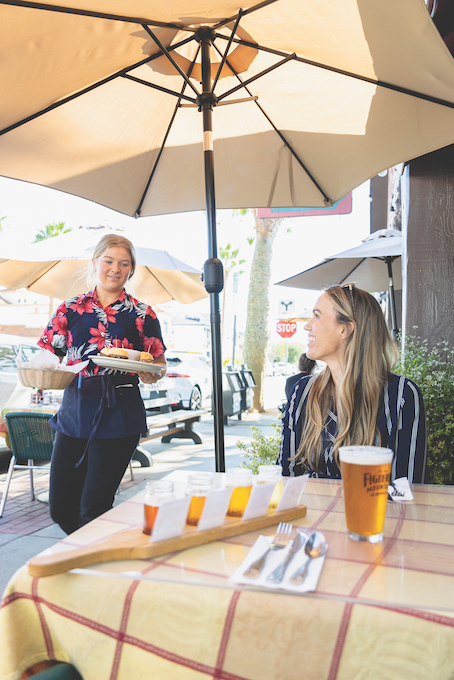
To recognize the island homes that still reflect the original construction styles of the area and offer visitors a peek into the island’s history, the Balboa Island Museum began offering plaques to owners of the historic homes in 2015. For a home to be considered historic, it must have been built prior to 1960, as well as be the first home built on the land.
From historic cottages to mini mansions—and both homeowners and renters—Pepys says Balboa Island represents complete diversity. In fact, her home was built in 1913 and Pepys has been a resident on the island for 30 years.
“The lots are small, making this some of the most expensive real estate in the country,” Pepys says. “Renting can be more affordable than
actually owning.”
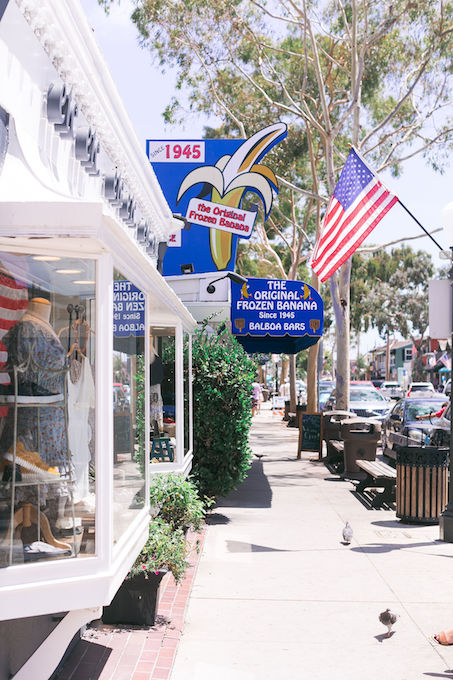
In addition to the homes, the island’s small, independent shops and restaurants add to its charm. Wilma’s Patio owner Sheri Drewry says, since 1914, she is only the third owner of the building where Wilma’s resides. Drewry’s parents including her mother, Wilma, opened the restaurant on the island in 1982 and it moved to its current location in 1997.
“My parents loved this restaurant and this community, and the community has loved us back,” Drewry says. “This is the way it should be: easy. It’s Mayberry and people tend to stay here for most or all of their lives. You walk out the door and embrace the day, see the neighbors or visit some of the local shops. Whether you live on the island or work on the island, it’s not intense—all the life stresses kind of melt away. This is an escape whether you are on vacation or not.”
Activities for All
Finding something to do on Balboa Island is never a problem. Marine Avenue is where many of the area’s high-end shops and restaurants are located—from Sunny Days clothing boutique to Mare Blu swimwear, Charleston Shoe Co., Blu Canoe housewares, Sur La Mer Coastal Goods, which offers gifts, accessories and decor, Italian restaurants Ciao and Trattoria, and Basilic, which serves Swiss and French cuisine.
However, there are other small businesses sprinkled throughout the community. And, of course, summertime calls for a stop at Dad’s or Sugar ‘n Spice for a Balboa Bar, a chocolate-dipped ice cream treat rolled in nuts, sprinkles or other toppings.
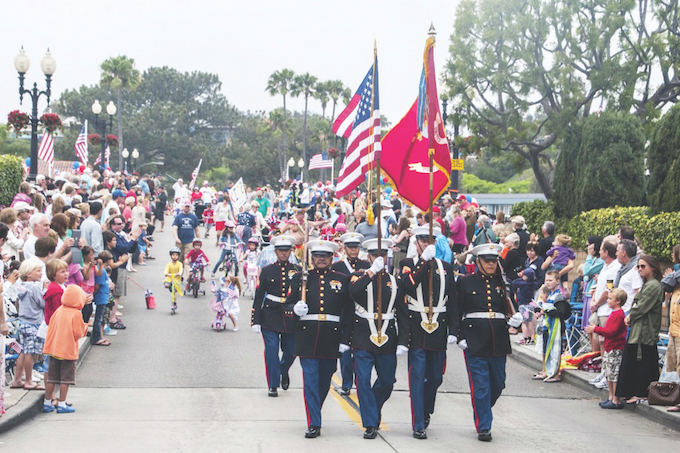
Visitors and residents can take the Balboa Island Ferry between the island and the peninsula where the Balboa Fun Zone lies just across the water with a Ferris wheel, arcade and more restaurant options as well as the nearby Balboa Pavilion, which has been a beacon for local boaters for more than 100 years.
Since Balboa Island is located in one of the largest recreation harbors in the U.S., locals and visitors can also rent a boat, paddleboard or kayak to explore the bay and channels. Parking can be limited, so renting a bicycle on the island is also a great way to tour the locale. At any time of day, just walking around the island on the promenade is a social event, adds Dennerline, an island resident on and off for the past 40 years.
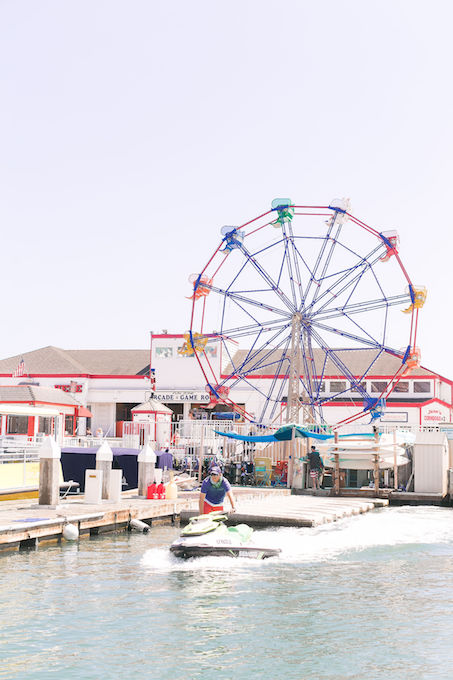
“People living on Balboa Island spend their leisure time dining at island restaurants and shopping at mom-and-pop boutiques, specialty shops and galleries as well as visiting our local Balboa Island Museum. It is like being on vacation all the time in this breathtaking, one-of-a-kind Newport Beach community,” Shafer says. “While this wonderful area is small, Balboa Island has different activities such as the Newport Beach Christmas Boat Parade, Balboa Island Artwalk and Balboa Island Parade in June to keep us busy all year long.”
In addition to these events, there’s a sandcastle contest, Easter Bunny visits, concerts in the park, the Ring of Lights, Holiday Home Walking Tour and tree lighting ceremony, which are all special traditions on the island.
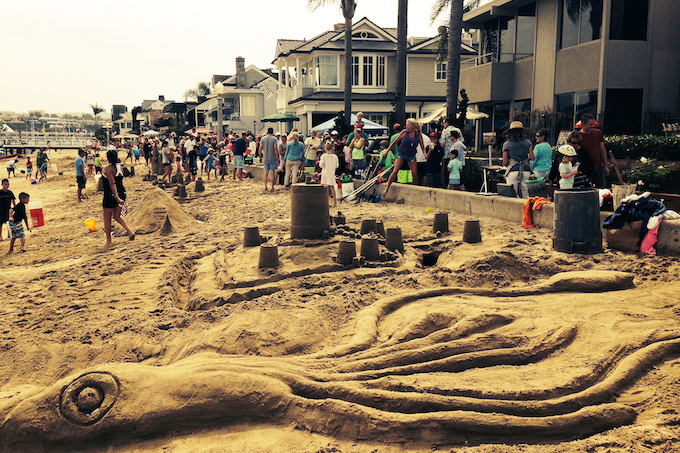
“The people, lifestyle and mindset of the island really makes it what it is—it’s not pretentious and there’s always a community feel,” Drewry says. “A perfect day on island includes a stroll down Marine Avenue and a ride on the ferry to immerse yourself in the neighborhood with the locals. It’s safe and friendly.”




